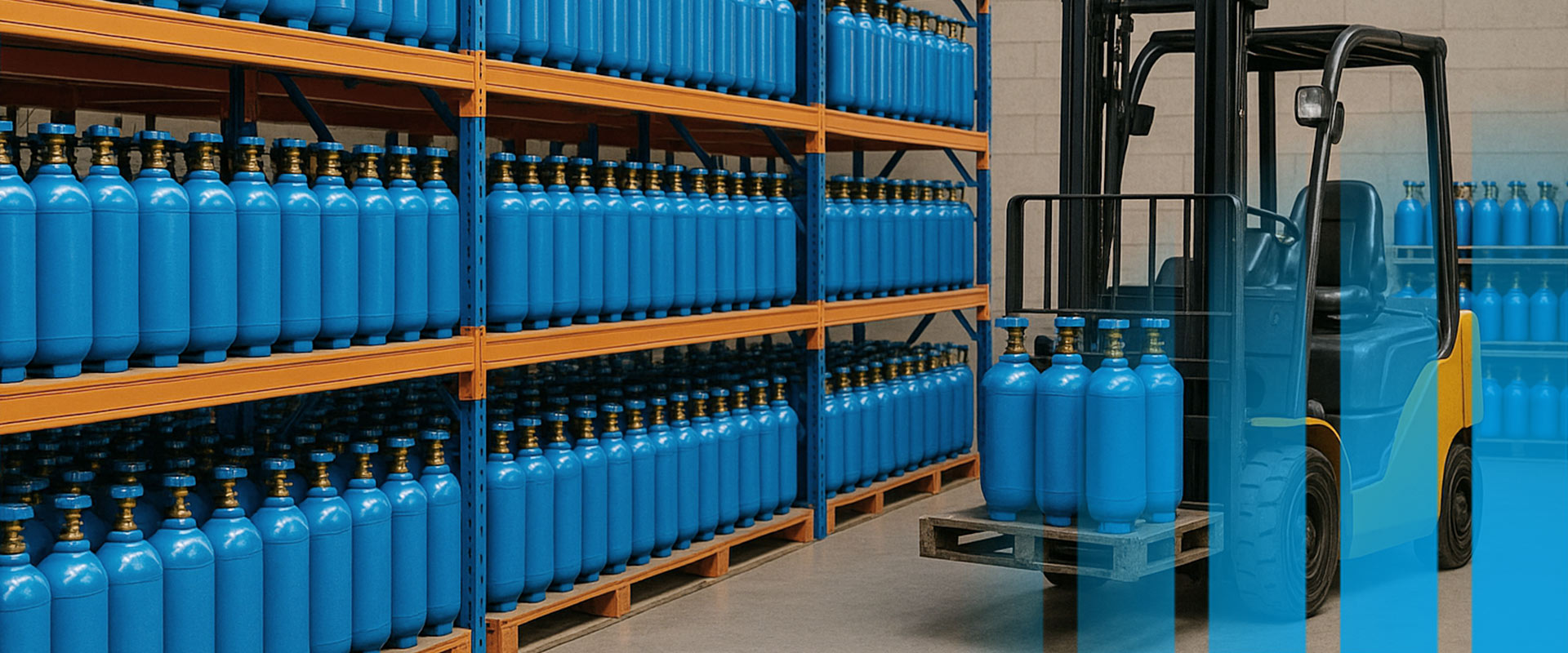Waste management
Gas warning systems in hazardous waste storage facilities – Safety technology for waste disposal, recycling and environmental protection
In modern waste management, hazardous substances are part of the daily working environment. Whether in interim storage facilities for hazardous waste, during the disposal of chemicals, solvents or oily operating materials – wherever hazardous substances are stored, transferred or treated, there is a considerable risk of uncontrolled gas releases. Many of these gases are flammable, toxic or reactive – such as hydrogen sulphide, ammonia, carbon monoxide or volatile organic compounds (VOCs). The use of reliable gas warning systems is therefore essential to ensure the long-term safety of personnel, operating facilities and the environment.
Early warning system for critical situations
Stationary gas warning systems detect dangerous gas concentrations in real time. Exceeding defined threshold values automatically triggers warnings – acoustically, visually or directly connected to control and safety systems. This allows ventilation systems to be activated, electrical systems to be switched off or access to be blocked. These automated protective reactions are crucial for quick and targeted action in the event of an emergency – especially in areas where employees are regularly present or where there are sources of ignition.
The challenges in waste management are particularly diverse: changing substances, non-standardized containers, different storage conditions and weather influences require particularly robust, precise and low-maintenance gas detection technology. Ex-protected sensors with high long-term stability and digital communication (e.g. via Modbus, Profibus or Ethernet) enable integration into higher-level SCADA or building management systems. This allows all safety-relevant processes to be monitored, documented and analyzed centrally – including as part of audits or incident regulations.
Legal basis and economic benefits
In addition to the purely technical safety function, gas warning systems also fulfill important legal requirements: The German Ordinance on Industrial Safety and Health (BetrSichV), the Technical Rules for Hazardous Substances (TRGS 510) and the ATEX directives stipulate suitable gas monitoring systems in many cases. Companies that do not meet these requirements risk high fines, official requirements or the loss of insurance claims.
The use of modern gas detection technology also offers economic benefits: Unplanned business interruptions, damage events or staff absences can be avoided. At the same time, they promote the trust of authorities, customers and auditors – for example in the context of certifications in accordance with ISO 45001 (occupational health and safety), ISO 14001 (environmental management) or EMAS.
Conclusion:
Gas warning systems in hazardous waste storage facilities are far more than just a legal obligation – they are a key component of occupational health and safety, environmental safety and economic stability. Companies in the waste management and recycling industry that rely on modern, integrable gas detection systems are investing in sustainability, risk prevention and future security. Continuous monitoring of potentially hazardous gases not only protects human lives, but also secures your company’s operating license and reputation.
